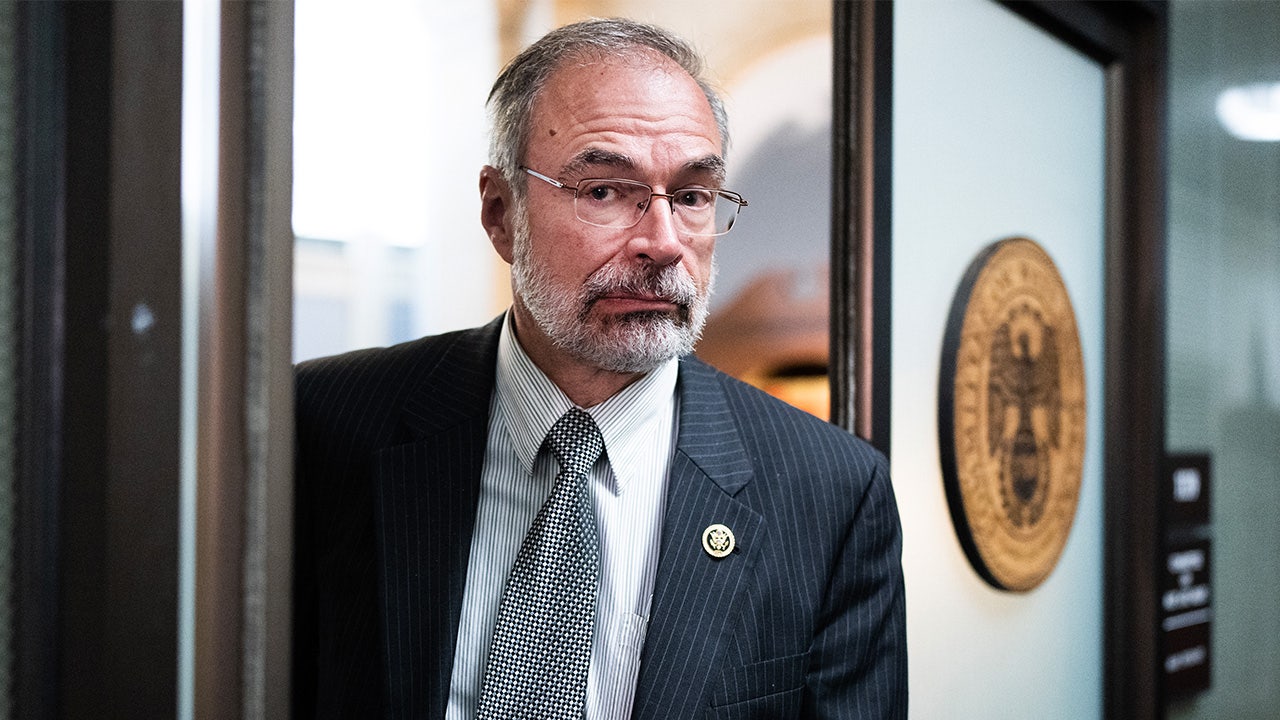Crypto
Navigating Cryptocurrency Regulations in California: What Cerritos Residents Need to Know

Gold and silver round coins photo – Free Gold Image on Unsplash
As cryptocurrency adoption continues to grow, Cerritos residents should be aware of California’s evolving regulatory landscape for digital assets. The Golden State recently enacted landmark legislation that will impact how cryptocurrencies are bought, sold, and used. Whether you’re looking to invest in popular digital currencies like Bitcoin, Ethereum, or altcoins such as Tron, understanding the new rules is essential.
For Cerritos residents exploring cryptocurrencies, understanding secure storage and purchasing options is crucial. No matter which coin you’re looking to buy, it’s important to research reputable exchanges and wallet options. If you’re unfamiliar with the different cryptocurrencies, consider reading the token’s whitepaper, roadmap, or a Bitcoin, Ethereum, or Tron buying guide online for example, which can provide valuable insights into the purchasing process. Staying informed about regulations, security best practices, and specific coin characteristics will help Cerritos residents navigate this emerging financial technology responsibly.
The Digital Financial Assets Law
In October 2023, Governor Gavin Newsom signed the Digital Financial Assets Law (DFAL), set to take effect on July 1, 2025. This comprehensive legislation establishes a licensing regime for cryptocurrency companies operating in California, marking a significant shift in how the state approaches digital asset regulation.
Key Components of the DFAL
Licensing Requirements
Companies engaging in “digital financial asset business activity” with California residents will need to obtain a license from the Department of Financial Protection and Innovation (DFPI). This includes businesses involved in:
- Exchanging, transferring, or storing digital financial assets.
- Providing custody services for digital assets.
- Buying and selling digital assets as a business.
Consumer Protections
The law aims to safeguard consumers by imposing strict requirements on licensed businesses, including:
- Mandated disclosures about the risks of digital financial assets.
- Capital adequacy standards to ensure financial stability.
- Cybersecurity measures to protect against hacks and data breaches.
- Prohibition of unfair or deceptive acts and practices.
Stablecoin Regulations
The DFAL places specific restrictions on stablecoins, requiring issuers to
- Obtain a license from the DFPI.
- Maintain reserves equal to the amount of outstanding stablecoins.
- Provide regular audits of their reserves.
Impact on Cerritos Residents
While the DFAL primarily regulates businesses, it will have significant implications for Cerritos residents who use or are interested in cryptocurrencies.
Using Cryptocurrency
Cerritos residents can still buy, sell, and use cryptocurrencies, but should be aware of the following:
Licensed Exchanges
After July 2025, ensure you’re using licensed platforms for cryptocurrency transactions. This will provide enhanced consumer protections and reduce the risk of fraud or mismanagement. If you’re looking to invest in specific cryptocurrencies like Bitcoin, Ethereum, or even altcoins such as Tron, it’s crucial to use trusted platforms. For those new to the space, consider consulting a Tron buying guide to understand the steps involved in purchasing Tron securely and efficiently.
Tax Implications
The IRS treats cryptocurrencies as property, meaning transactions may be subject to capital gains taxes. Cerritos residents should:
- Keep detailed records of all crypto transactions.
- Report crypto income on tax returns.
- Consider consulting with a tax professional familiar with cryptocurrency.
Consumer Education
The DFPI is likely to increase efforts to educate consumers about the risks and benefits of cryptocurrencies. Cerritos residents should take advantage of these resources to make informed decisions.
Enhanced Protections
The new regulations aim to provide stronger safeguards for consumers, potentially reducing the risk of scams and fraudulent activities in the crypto space.
Local Businesses
Cerritos businesses interested in accepting cryptocurrency payments or engaging in crypto-related activities should consider the following:
Stay Informed
Keep track of the evolving regulatory landscape and any additional guidance from the DFPI.
This may include:
- Subscribing to DFPI newsletters or alerts
- Joining local business associations that provide updates on regulatory changes
- Consulting with legal experts specializing in cryptocurrency regulations
Compliance Costs
Evaluate the potential need for licensing and associated compliance requirements if engaging in certain cryptocurrency activities. This may involve:
- Assessing whether your business activities fall under the DFAL’s purview
- Budgeting for potential licensing fees and compliance-related expenses
- Implementing necessary systems and procedures to meet regulatory requirements
Explore Payment Processors
Research reputable cryptocurrency payment processors that can help navigate regulatory requirements. Look for processors that:
- Are compliant with California regulations
- Offer seamless integration with existing point-of-sale systems
- Provide robust security measures to protect transactions
Risk Assessment
Conduct a thorough risk assessment of incorporating cryptocurrency into your business model, considering factors such as:
- Volatility of cryptocurrency prices
- Potential impact on cash flow and accounting practices
- Customer demand for cryptocurrency payment options
The Future of Crypto Regulation in California
As California enforces the DFAL, Cerritos residents can expect increased oversight from the DFPI, including more audits of crypto businesses, stricter enforcement, and greater industry transparency.
- Potential delays: Efforts are underway to delay DFAL’s licensing requirements until July 2026. Residents should stay updated on timeline changes and regulatory shifts.
- Evolving landscape: New regulations and clarifications will emerge as the crypto industry develops, potentially addressing new technologies and federal oversight.
- Innovation and growth: Though regulation may pose challenges, it could attract institutional investors, foster innovation, and increase mainstream adoption of more secure and user-friendly crypto products.
Related

Crypto
Cryptocurrency exchange network accused of helping Russia hit with sanctions
Article content
WASHINGTON (AP) — A network of people and virtual currency exchanges associated with harboring Russian cybercrime were hit with sanctions on Thursday, in a government-wide crackdown on cybercrime that could assist Russia ahead of President Joe Biden’s meeting with Ukrainian President Volodymyr Zelenskyy.
U.S. Treasury sanctioned alleged Russian hacker Sergey Ivanov and Cryptex — a St. Vincent and Grenadines registered virtual currency exchange operating in Russia. Virtual currency exchanges allow people and businesses to trade cryptocurrencies for other assets, such as conventional dollars or other digital currencies.
Article content
Treasury alleges that Ivanov has laundered hundreds of millions of dollars worth of virtual currency for cyber criminals and darknet marketplace vendors for the last 20 years, including for Timur Shakhmametov, who allegedly created an online marketplace for stolen credit card data and compromised IDs called Joker’s Stash. Ivanov laundered the proceeds from Joker’s Stash, Treasury says.
The State Department is offering a $10 million reward for information that would lead to the arrest and possible conviction of the two men and the U.S. Attorney’s Office in Virginia has unsealed an indictment against them.
Biden said in a statement announcing the sanctions Thursday that the U.S. “will continue to raise the costs on Russia for its war in Ukraine and to deprive the Russian defense industrial base of resources.”
He meets with Zelenskyy Thursday to announce a surge in security assistance for Ukraine and other actions meant to assist the war-torn country as Russia continues to invade.
State Department Spokesman Matthew Miller said, “We will continue to use all our tools and authorities to deter and expose these money laundering networks and impose cost on the cyber criminals and support networks. We reiterate our call that Russia must take concrete steps to prevent cyber criminals from freely operating in its jurisdiction.”
U.S officials have taken several actions against Russian cybercriminals since the start of the invasion in February 2022.
Earlier this year, Treasury’s Office of Foreign Assets Control sanctioned 13 firms — five of which are owned by an already sanctioned person — and two people who have all either helped build or operate blockchain-based services for, or enabled virtual currency payments in, the Russian financial sector, “thus enabling potential sanctions evasion,” according to U.S. Treasury.
Share this article in your social network
Crypto
Cryptocurrency Prices on September 26: BTC Backtracks To $63K, But WLD Soars 11%

The cryptocurrency prices on September 26 have again raised investor concerns globally as Bitcoin and major altcoins plunged into the red territory. Notably, even the global crypto market cap slipped 1.92% to $2.22 trillion today. Further, the total market volume fell 12.5% to $65.06 billion. However, Worldcoin (WLD) emerged among the day’s top gainers, defying the broader market sentiment.
Here’s a brief report on some of the leading cryptocurrencies by market cap and their price movements today, September 26.
Cryptocurrency Prices Today: BTC, ETH, SOL, & XRP In The Red
While BTC waned to the $63K price level today, ETH price marked a slip below $2,600. Simultaneously, SOL, XRP, and DOGE prices slipped slightly over 1% today, whereas SHIB too defied the broader market trend. So, let’s take a closer look at major coins’ price action today.
Bitcoin Price Today
BTC price traded at $63,450 at press time, up nearly 1.4% in the past 24 hours. The coin’s intraday low and high were $62,669.27 and $64,462.94, underscoring a highly volatile movement for the asset. This volatility comes despite $105.84 million inflows spot Bitcoin ETFs as of September 25. Besides, despite BlackRock’s additional BTC buys, the coin’s trade is turbulent.
Bitcoin’s market cap rested at $1.25 trillion today. Simultaneously, the flagship crypto’s dominance saw a 0.02% decline to 56.24%.
Ethereum Price Today
Whilst, ETH price chart illustrated a nearly 1% dip in value to reach $2,604. The coin’s intraday low and high were recorded as $2,557.72 and $2,646.79, underlining a brief slip below $2,600.
Simultaneously, ETH price dropped despite $43.23 million inflows in spot Ethereum ETFs as of September 25, per Soso value data. Ethereum’s market cap rested at $313.19 billion today. Despite today’s turbulence, the ETH funding rate sparked further bullishness recently, hinting that phenomenal gains loom for the token.
Solana Price Today
The crypto SOL fell over 1.5% in the past 24 hours and is currently trading at $149.18. The coin’s intraday low and high were recorded as $146.87 and $152.89, respectively. Solana’s market cap rested at $69.93 billion today.
XRP Price Today
Simultaneously, against the backdrop of colossal Ripple whale transactions, XRP price today slipped nearly 2% to $0.5819. Its intraday low and high were recorded as $0.5769 and $0.5935, respectively. XRP’s market cap rested at $32.87 billion today.
Meme Coins’ Performance
Dogecoin (DOGE) price fell nearly 1.5% over the past day to reach $0.1089. However, Shiba Inu gained nearly 4% from yesterday to reach $0.00001556.
PEPE and FLOKI prices slipped 3%-4% today, whereas WIF price gained nearly 2%.
Top Cryptocurrency Gainers Prices Today
Worldcoin
WLD price surged 11% in the past 24 hours and is currently trading at $2.06. The crypto’s intraday low and high were recorded as $1.80 and $2.17, respectively.
Injective
INJ price pumped over 4% today and is currently trading at $22.06. The token’s intraday low and high were recorded as $21.25 and $22.86, respectively.
UNUS SED LEO
LEO price jumped 3% over the past day to reach $5.95. The coin’s intraday low and high were $5.68 and $6.01, respectively.
Top Cryptocurrency Losers Prices Today
Fantom
FTM price dipped 7% over the past day to $0.6512. The crypto’s 24-hour low and peak were $0.6416 and $0.6886, respectively.
Conflux
CFX price followed, dropping 7% over the past day to reach $0.1572. The coin’s intraday low and high were $0.1522 and $0.1669, respectively.
Stacks
STX price fell 6% over the past day to reach $1.92. The crypto’s 24-hour low and high were $1.85 and $2.04, respectively.
Besides, the hourly charts sparked further investor speculations on the cryptocurrency prices today, as BTC and ETH gained 0.11% and 0.14%, respectively. Market watchers continue to extensively eye the coins for future price action shifts.
Disclaimer: The presented content may include the personal opinion of the author and is subject to market condition. Do your market research before investing in cryptocurrencies. The author or the publication does not hold any responsibility for your personal financial loss.
Crypto
German Law Enforcement Seizes Russian No KYC Exchanges – Chainalysis

On September 19, 2024, the German Federal Criminal Police (BKA) seized the infrastructure of 47 Russian-language no-KYC (Know Your Customer) cryptocurrency exchanges. Dubbed “Operation Final Exchange,” the takedown stands out not only for its breadth, but also for the light it has shined on the central role instant-swap style no-KYC exchanges play in facilitating on-chain cybercrime.
As their name suggests, no-KYC exchanges have no known process for collecting customer information before allowing any level of deposit or withdrawal. They do not require a name, phone number, or email address, and make no attempt to verify this information prior to permitting transactions. As such, these services allow a range of cybercriminals to abuse their services without KYC controls to identify or disrupt illicit activity. The BKA’s Operation Final Exchange landing page calls out ransomware affiliates, botnet operators, and darknet vendors as users of the 47 targeted exchanges. Beyond that, these services offered fiat on- and off-ramping for sanctioned Russian banks, creating an avenue for sanctions evasion.
Below, we’ll dive into these exchanges’ on-chain activity, explore their nexus to sanctioned Russian banks, and discuss the disruption’s implications.
Who are these 47 No KYC Exchanges?
Our data reveals interesting patterns about the services targeted by the BKA, with robust direct and indirect exposure to various illicit services. At least seventeen of the exchanges saw a month of more than 50% of direct inflows from illicit sources. At least twelve saw a month where more than 30% of direct inflows were from darknet marketplaces (DNMs). At least six saw at least one month where stolen funds comprised more than 30% of total direct inflows. At least five had at least one month where more than 30% of indirect inflows were from sanctioned entities.
This exposure demonstrates that for many of these services, laundering illicit funds was a substantial part of their businesses. Indeed, as depicted in the below Chainalysis Crypto Investigations graph, the top ten services targeted by the BKA transacted with a broad array of illicit services, including, but not limited to, sanctioned entities, ransomware actors, DNMs, and darkweb escrow and breached data brokers.
The chart below shows the quarterly inflows to the top ten exchanges taken down by the BKA. These services received value from a variety of sources, including periods of significant inflows from drug-related DNMs, online pharmacies, malicious cybercriminals such as ransomware gangs, and funds stolen in heists and scams.
There is also a notable increase over time in the proportion of inflows from legitimate sources, notably centralized exchanges. While this change to the composition of inflows might in other circumstances suggest that the services were in the process of cleaning up their platforms, the reality is likely more complicated. In this case, the increased inflows from otherwise legitimate sources most likely represent the growing use of these services for sanctions evasion on the part of Russian nationals, who are likely trying to leverage these no KYC exchanges to evade sanctions on Russian banks.

How do these services work?
These services operate as instant-swap style services, in which users, without providing any personal information or going through any verification process, can swap from one currency to another. The offerings include crypto-to-crypto and fiat-to-crypto swaps, allowing users to instantly exchange popular cryptocurrencies and stablecoins, or to connect their bank account to on-/off-ramp fiat to crypto instantly.
As with other categories of the illicit crypto ecosystem, we have observed that no KYC exchanges, particularly those targeted by the BKA, often have overlapping or similar on-chain infrastructure, and in some instances even share off-chain networks, such as website shells, employees and administrators, physical locations, and ownership structures, to name a few. More often than not, these websites have no affiliated company incorporation, registration, phone numbers, physical addresses, or any indicator of jurisdictional operation. Unlike other high-risk and illicit services, most of these services do not have a social media presence, instead offering users the ability to interface with a bot on their homepages. Despite using servers based in Germany, these services cater primarily to a Russian clientele, as suggested by their default language settings in Russian and information on banking services for fiat transactions provided by sanctioned Russian banks, such as Sberbank.
Connectivity to sanctioned Russian banks
Many of the 47 no KYC exchanges were Russian-language platforms offering fiat-to-crypto and crypto-to-crypto instant exchange services. As we covered in our recent analysis of Russia’s new cryptocurrency legislation, Russian-language instant exchangers can be exploited to quickly move fiat currency from sanctioned Russian banks to specified crypto wallets, enabling entities to evade sanctions. Given the dramatically increased sanctions pressure on Russian banks following the full-scale invasion of Ukraine in February 2022, instant exchangers have emerged as a convenient way to on- or off-ramp funds for sanctioned banks. Of the 47 no KYC exchanges targeted in Operation Final Exchange, all that we have identified on-chain accepted on- and off-ramping with sanctioned Russian banks.
Breadth of disruption likely to generate actionable inroads
Most of the exchanges targeted by BKA have been active since 2021 or before, and the top three in terms of transactions processed – Xchange.cash, 60cek.org, and Bankcomat.com – have been active since 2016 or before, according to the Operation Final Exchange landing page. The longevity of these services suggests a substantial portion of customers affected will need to establish alternative financial facilitation and laundering pathways.
The disruption’s impact is likely to extend far beyond the no KYC exchanges targeted. As the BKA stated, it is now in possession of these exchanges’ development, production, and backup servers, as well as transactional details, registration data, and IP addresses. This data will likely be instrumental in generating follow-on leads for the BKA and key international law enforcement partners in the months to come. We continue to track this phenomenon closely and will flag new no KYC exchanges that emerge as key players in this space.
This website contains links to third-party sites that are not under the control of Chainalysis, Inc. or its affiliates (collectively “Chainalysis”). Access to such information does not imply association with, endorsement of, approval of, or recommendation by Chainalysis of the site or its operators, and Chainalysis is not responsible for the products, services, or other content hosted therein.
This material is for informational purposes only, and is not intended to provide legal, tax, financial, or investment advice. Recipients should consult their own advisors before making these types of decisions. Chainalysis has no responsibility or liability for any decision made or any other acts or omissions in connection with Recipient’s use of this material.
Chainalysis does not guarantee or warrant the accuracy, completeness, timeliness, suitability or validity of the information in this report and will not be responsible for any claim attributable to errors, omissions, or other inaccuracies of any part of such material.
-

 News1 week ago
News1 week agoSecret Service Told Trump It Needs to Bolster Security if He Keeps Golfing
-

 Business1 week ago
Business1 week agoU.S. Steel C.E.O. Says Nippon Deal Will Strengthen National Security
-

 Politics1 week ago
Politics1 week agoNew House Freedom Caucus chair reveals GOP rebel group's next 'big fight'
-

 News1 week ago
News1 week agoToplines: September 2024 Inquirer/Times/Siena Poll of Pennsylvania Registered Voters
-

 News1 week ago
News1 week agoDisney trips meant for homeless NYC students went to school employees' families
-

 Politics1 week ago
Politics1 week agoBiden admin moves to reinstate Trump-era rule, delist gray wolves from endangered species list
-

 Politics7 days ago
Politics7 days agoDem lawmakers push bill to restore funding to UN agency with alleged ties to Hamas: 'So necessary'
-

 World1 week ago
World1 week agoWhat’s South Africa’s new school language law and why is it controversial?














✓ Share: